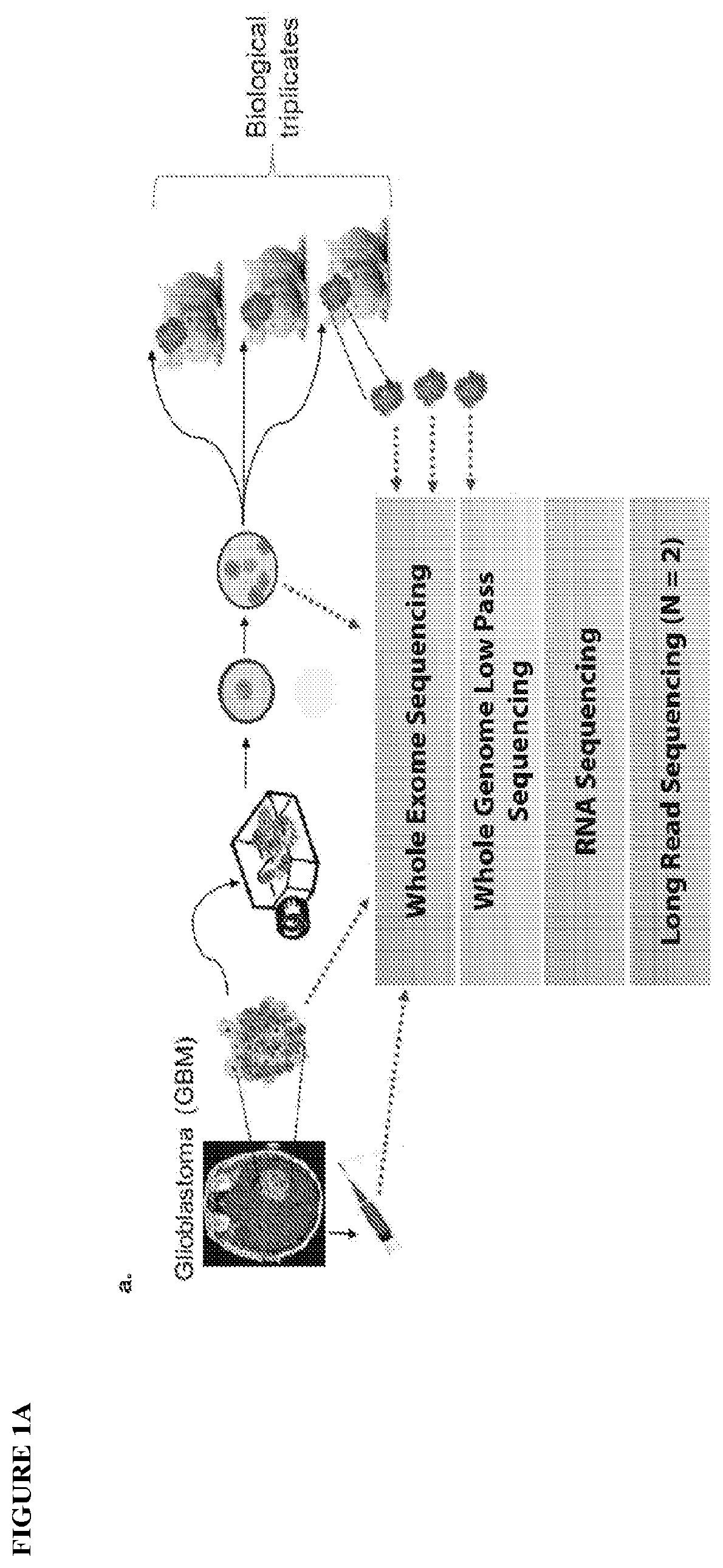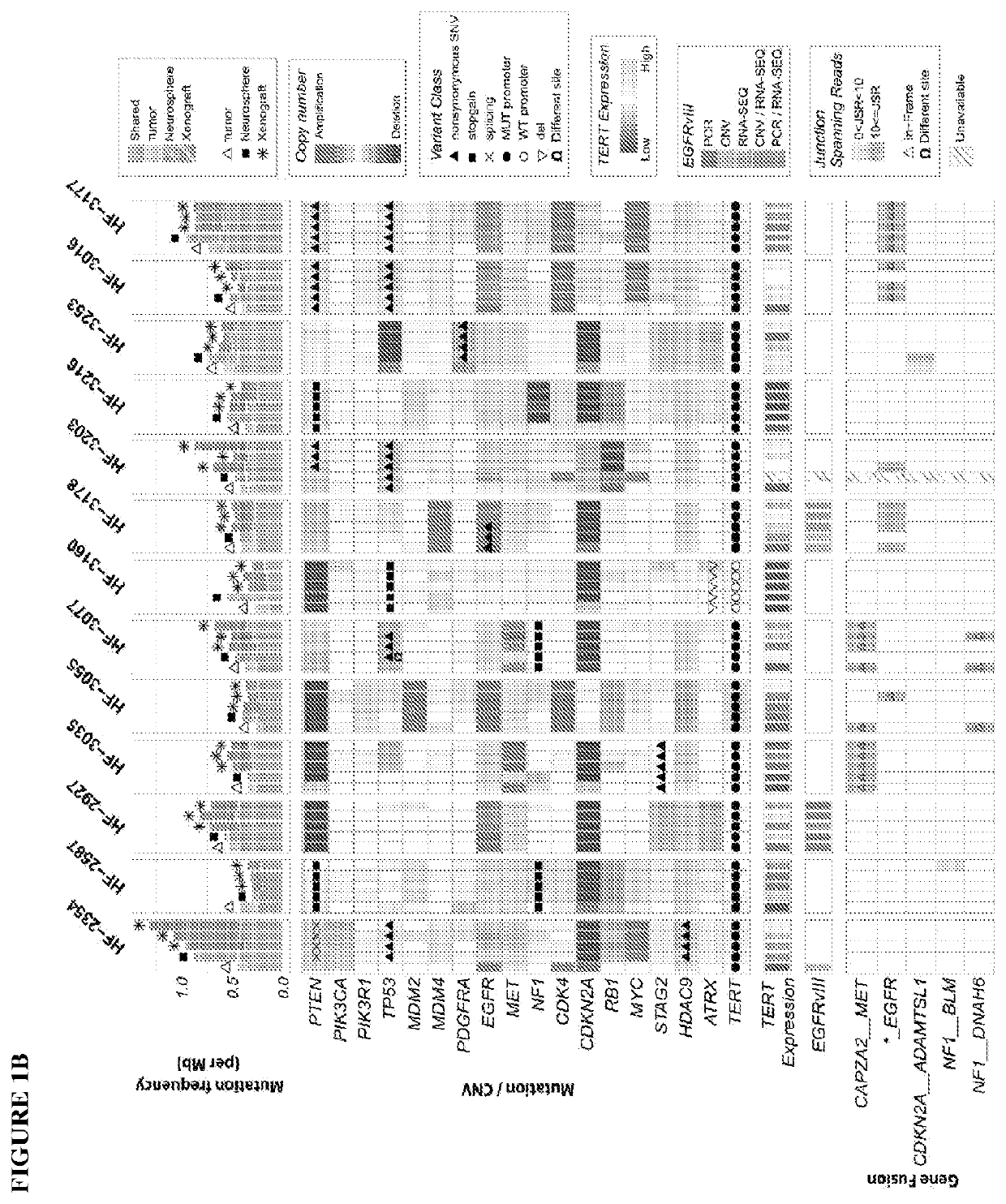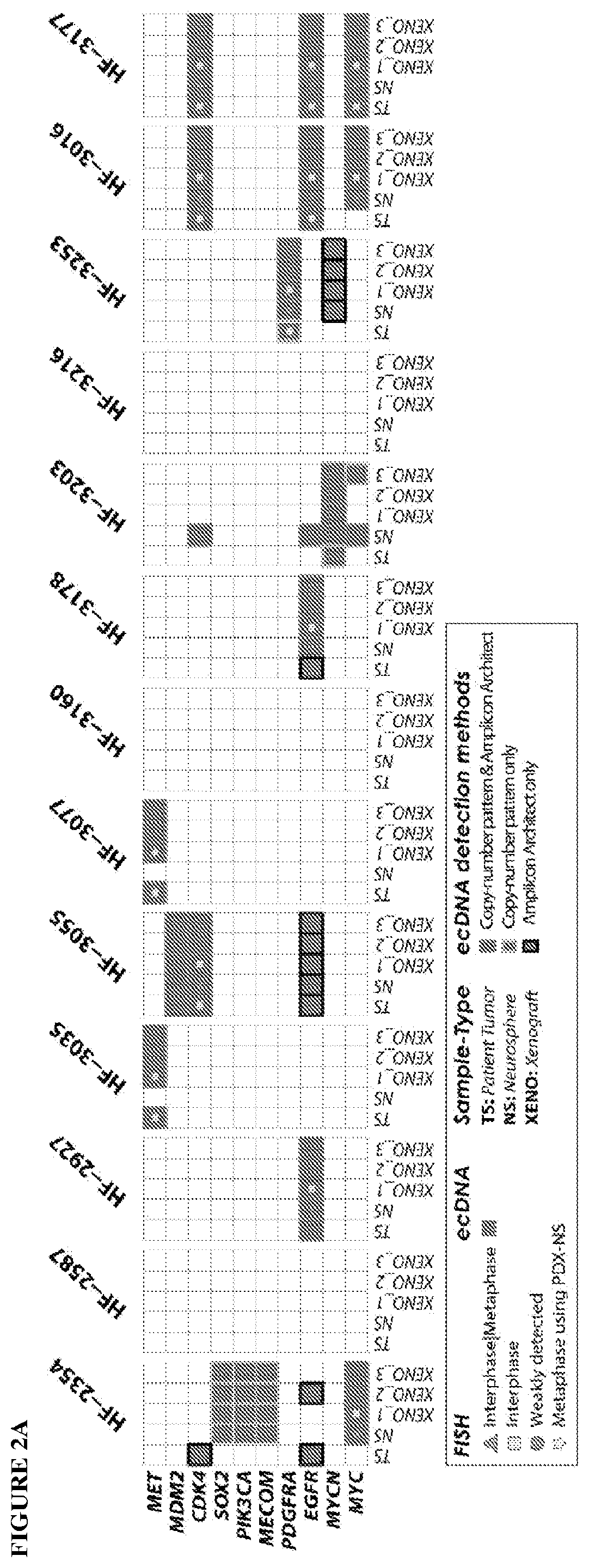A method of targeting patient-specific oncogenes in extrachromosomal DNA to treat glioblastoma
a glioblastoma and oncogene technology, applied in the field of glioblastoma treatment, can solve the problems of increased clonal heterogeneity, tumor growth and mortality, and the genome of cancer is subject to continuous mutagenic processes, and no effective treatment has been developed for glioblastoma, in particular gbm, to achieve the effect of inhibiting tumor glioma growth
- Summary
- Abstract
- Description
- Claims
- Application Information
AI Technical Summary
Benefits of technology
Problems solved by technology
Method used
Image
Examples
example 1
Tumor Sample Collection and Cell Culture
[0172]The inventors collected resected brain tumor specimens at Henry Ford Hospital (Detroit, Mich.) with written informed consent from patients, under a protocol approved by the Henry Ford Hospital Institutional Review Board, and graded pathologically according to the WHO criteria. The inventors snap froze and stored a portion of each tumor specimen in liquid nitrogen. was. They used an adjacent portion for cell culture. The inventors dissociated the tumor specimens enzymatically and cultured neurospheres enriched in cancer stem-like cells (CSC). In this study, the inventors adopted the protocol as detailed in Hasselbach, L. A. et al. Optimization of High Grade Glioma Cell Culture from Surgical Specimens for Use in Clinically Relevant Animal Models and 3D immunochemistry, J Vis Exp 83, e51088 (2014); and deCarvalho, Gliosarcoma stem cells undergo glial and mesenchymal differentiation in vivo. Stem Cells 28, 181-90 (2010). These references are...
example 2
Patient Derived Xenografts (PDX)
[0176]Orthotopic xenografts: Following IACUC guidelines in an institutionally approved animal use protocol, the inventors implanted the GBM neurosphere cell suspensions into 8-week old female nude mice (NCRNU, Taconic Farms) (i.e. immunodeficient mice) using the protocol described in Berezovsky, A. D. et al. SOX2 promotes malignancy in glioblastoma by regulating plasticity and astrocytic differentiation, Neoplasia 16, 193-206 e25 (2014), which is incorporated herein by reference. It should be noted that other “nude” or “immunodeficient” mice may be used in the present invention, as would be apparent to those skilled in the art. Thus, the present invention is not limited to the specific nude mice used in this experiment. The inventors implanted a minimum of 8 mice with each neurosphere line. Animals were anesthetized with a mixture of ketamine and xylazine. The inventors injected dissociated neurosphere cells (3×105) using a Hamilton syringe at a defin...
example 3
Drug Treatment
[0178]The inventors treated HF3077 PDXs with capmatinib (purchased from Matrix Scientific Products (Columbia, S.C.)) suspensions in 0.5% methylcellulose / 0.1% Tween 80 were prepared every week and administered by oral gavage using a 20 g×1.5″ gavage needle (Cadence) at a dose of 30 mg / kg once a day (5 days / week) until the end of the study. Control animals received vehicle only mock gavage. Forty-five days after implant, animals were randomized to control or treatment groups. Each mouse was followed until death with no censoring and mean survival differences were estimated using a t-distribution to estimate 95% confidence intervals. With a sample size of nine (9) mice per group, a two-sided 95% confidence interval for the difference in mean survival would extend 0.92SD from the observed difference in mean survival, assuming the CI is based on large sample z statistic. Equivalently 80% power was expected to detect a difference in mean survival of 1.4SD, for the common sta...
PUM
| Property | Measurement | Unit |
|---|---|---|
| Length | aaaaa | aaaaa |
Abstract
Description
Claims
Application Information
 Login to View More
Login to View More - R&D
- Intellectual Property
- Life Sciences
- Materials
- Tech Scout
- Unparalleled Data Quality
- Higher Quality Content
- 60% Fewer Hallucinations
Browse by: Latest US Patents, China's latest patents, Technical Efficacy Thesaurus, Application Domain, Technology Topic, Popular Technical Reports.
© 2025 PatSnap. All rights reserved.Legal|Privacy policy|Modern Slavery Act Transparency Statement|Sitemap|About US| Contact US: help@patsnap.com



